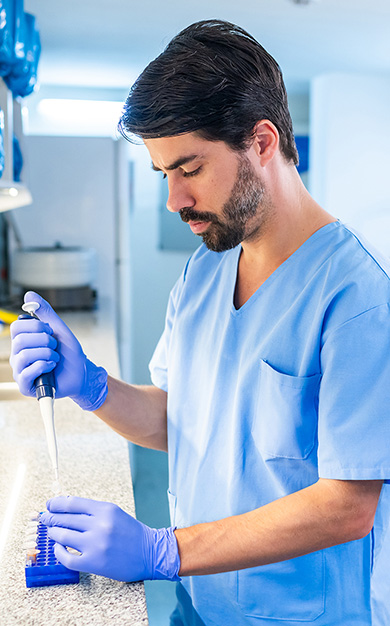I Hate My Glaucoma Eye Drops! What Are My Other Options?
Featuring
Tania Lamba, MD
Board-certified ophthalmologist and glaucoma specialist at Krieger Eye Institute
Clinical associate professor of ophthalmology, The George Washington University
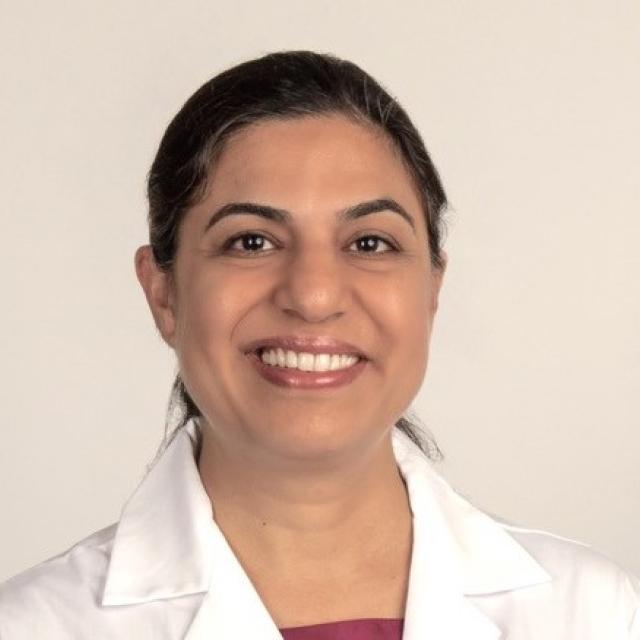

Tania Lamba, MD
Board-certified ophthalmologist and glaucoma specialist at Krieger Eye Institute
Clinical associate professor of ophthalmology, The George Washington University

The most common treatments for glaucoma are eye drops, but they are not the only option! Guest expert Tania Lamba, MD, will discuss current and future glaucoma treatment options.
Dr. Lamba is a board-certified ophthalmologist and glaucoma specialist at the Krieger Eye Institute in Baltimore, Maryland. She also serves as clinical associate professor of ophthalmology in the Department of Ophthalmology at The George Washington University. At the Krieger Eye Institute, Dr. Lamba is closely involved in residency training in addition to her glaucoma practice. Dr. Lamba specializes in medical, laser and surgical treatments for glaucoma and performs cataract surgery. Dr. Lamba is a member of the American Academy of Ophthalmology and the American Glaucoma Society, where she serves on the Patient Engagement Subcommittee.
Download English Transcript PDF
MS. KACI BAEZ: Hello, and welcome to today’s BrightFocus Glaucoma Chat. My name is Kaci Baez, and I’m Vice President of Integrated Marketing and Communications at BrightFocus Foundation. And I’m so happy to be here with you today to talk about “I Hate My Glaucoma Eye Drops! What Are My Other Options?” BrightFocus Glaucoma Chats is a monthly program, in partnership with the American Glaucoma Society, designed to provide people living with glaucoma and the family and friends who support them with information straight from experts. BrightFocus is committed to investing in bold research worldwide that generates novel approaches, diagnostic tools, and life-enhancing treatments that serve all populations in the fight against age-related brain and vision diseases.
Now, I would like to introduce Dr. Tania Lamba. Dr. Lamba is a board-certified ophthalmologist and glaucoma specialist at the Krieger Eye Institute in Baltimore, Maryland. She also serves as a clinical associate professor of ophthalmology at The George Washington University. At Krieger, Dr. Lamba is closely involved in residency training in addition to her glaucoma practice. She specializes in medical, laser, and surgical treatments and performs cataract surgery. She’s also a member of the American Academy of Ophthalmology and the American Glaucoma Society, where she serves on a patient-engagement subcommittee. Welcome, Dr. Lamba. Thank you so much for joining us today.
DR. TANIA LAMBA: Thank you, Kaci, for your kind introduction, and thank you for having me on the program.
MS. KACI BAEZ: Thank you so much. We’re so appreciative that you’re here to share your expertise and answer some of our burning questions. Our first question is: Why do I have to use glaucoma eye drops?
DR. TANIA LAMBA: Thank you, Kaci, for that question. Glaucoma is a disease that can cause vision loss and even blindness by damaging the optic nerve, which is the cable that carries all the information from the eye to the brain. This nerve damage from glaucoma usually happens when the pressure in the eye is too high for your eye, and this nerve damage then causes vision loss. Now there are different treatments available for glaucoma, which include medication, laser, and surgery. But amongst all these options, eyedrop medications are the most common treatment for glaucoma. Now, these eye drops will lower the pressure in the eye, and that’s how it prevents further damage to the optic nerve. So, yes, if your ophthalmologist has prescribed eye drops for glaucoma, then you do have to use the drops on a daily basis, as per your doctor’s recommendations. And this is because glaucoma is not something that’s going to go away; you’re going to have to be on treatment for the rest of your life.
MS. KACI BAEZ: Okay, thank you. That’s very insightful. What kind of doctor should I see if I want eye drops or a second opinion on my prescribed glaucoma eye drops?
DR. TANIA LAMBA: You should be seeing an ophthalmologist if you’ve been told that you need eye drops for glaucoma. An ophthalmologist is a medical doctor who has been to medical school and then has received specialized residency training in ophthalmology. So, you should get a glaucoma evaluation with an ophthalmologist if somebody told you that you need to get eye drops for glaucoma. Many times patients will go in for a glasses check with their optometrist, and they might note that the optic nerve looks suspicious for glaucoma, and then recommend that you should make an appointment with an ophthalmologist. But in some states now, optometrists are allowed to prescribe eye drops, but I would encourage you to seek a second opinion with an ophthalmologist, who has the medical training to diagnose and treat eye conditions like glaucoma. Now, when you do call to make an appointment with an ophthalmologist and you are given the option to see a subspecialist, then you would, in that case, choose to see the glaucoma specialist.
MS. KACI BAEZ: Okay, thank you. What exactly are these eye drops doing, and how long would I need to take them?
DR. TANIA LAMBA: That’s an excellent question. The eye drops are decreasing the eye pressure, and it’s been proven from numerous studies that by making the eye pressure lower, we can actually reduce the risk of the glaucoma getting worse. They have different categories of eye drops based on the chemical formulation, and different eye drops lower the pressure either by reducing the amount of fluid that your eye is making, or by helping that fluid drain better out of the eye. And by doing that—that is, by lowering the eye pressure—the glaucoma drops decrease the risk of your glaucoma getting worse. Now, the second part of your question, which was: How long do you need to take them? Well, once you’re diagnosed with glaucoma, you will need to stay on the drops pretty much for the rest of your life, since this is not a condition that is going to go away unless you have a procedure done that lowers your pressure enough and reduces the amount of drops that you need to take or, in some cases, may eliminate the need for eye drops.
MS. KACI BAEZ: Okay, we have a few more questions about how to use the drops, such as: Does the time of day matter, a.m. or p.m.? What should I do if I forget to use my drops? And also, why do they sting, and does using them at a certain time maybe lessen any of the side effects?
DR. TANIA LAMBA: Yes, so, time of the day does matter. It depends on the type of eyedrop that you’re using. Some eye drops work best if used once a day at bedtime, whereas other drops work best if used once a day in the morning. For example, the class of medications that are called prostaglandins—and some of you may have heard the drop names latanoprost or travoprost—these should be used once a day at bedtime. They work best if used at night. There are some other drops like Cosopt®, which is dorzolamide/timolol, or brimonidine—those need to be used two times a day, and in some cases, brimonidine is even prescribed as a three times a day dosing. Your ophthalmologist will tell you your drop schedule, and it’s really, really important for you to follow that drop schedule. Another thing to note is that for drops that are required to be used twice a day, you need to space those drops out so that you are using them about 12 hours apart. So, if you use the drops around 8:00 in the morning, you want to use them again around 8:00 at night. And then similarly, for drops that need to be used three times a day, you need to space them around 8 hours apart. We know that sometimes it’s not practical, so you can adjust your timings a little bit depending on what time you wake up and sleep, but it’s best to space them as much as you can. And you also want to use the drops the number of times that you’ve been told—so, if it’s twice a day, you need to use them twice a day. If it’s three times a day, three times a day, but space them as much as you can.
Then your other question was: What should I do if I forget to use my eye drops, which does happen. We do understand that it’s really, really hard to stick to a daily schedule, especially when you’re getting started. It’s important not to miss your drops, but if it happens once in a while, it’s okay, but you don’t want this to happen on a regular basis because then it’ll cause poor glaucoma control, and then over time that will cause vision loss. Now, if you did forget to use one of your eye drops, I would just say go ahead and put the drop in as soon as you remember, and then continue with your regular schedule. It’s important to set up reminders if you continue to miss your drops, and sometimes it’s just easy to set it up so that you’re using the drops at the same time as doing an activity, like if you’re brushing your teeth in the morning and at night, then use your drops just in the morning and at night if you’re supposed to use them twice a day. In that case you can just keep them in the medicine cabinet in the bathroom. If you’re using drops at bedtime, you can just keep it on your nightstand. That way you don’t have to get up and get out of bed again, which you may not do. That way you just have it right next to you when you go to bed, and you can put your drop in. You can set a phone alarm. I mean, these days you can have phone apps that you can use that can help you track your medications and give you a reminder. Or sometimes just having a simple paper chart that you can just check off, because sometimes you forgot whether you put the drop in or not, and if you have that check mark next to your drop, that’s something fairly simple and easy to do.
And then you asked about why some of the drops burn or sting at times, and that’s because all of the medications have preservatives in them, and those preservatives help keep the medication stable inside the medicine bottle. Usually the sensation will go away after a few minutes because your natural tears will just wash away the extra drop, but for some people the surface of the eyes may be really dry and irritated, and in that case, when the glaucoma drop hits the surface of the eye, it can cause burning and stinging. One way to deal with this is to use some artificial tears. These are just over-the-counter lubricating eye drops that you can use 5 minutes before you put your glaucoma drop in, and that will help with those symptoms. There’s also some over-the-counter artificial tear gels, like thicker formulations or ointments, that you can use at night, and those will help soothe your eyes at night, but it’s important to note that you want to do this after you’ve used your glaucoma drops—so, the ointment should go in last because otherwise it will prevent your glaucoma drop from getting into the eye. But if you do continue to have irritation, do talk about it to your ophthalmologist because they can discuss other eye drops or other treatment options for you.
MS. KACI BAEZ: So many people do struggle with that, with remembering to take medication or to use the eye drops. And then when you do have those side effects, it can make it harder to keep up with, so thank you for that, for those tips. Are there other options that people might have if they just really do not like the drops or they are seeking alternative treatments?
DR. TANIA LAMBA: If you do not like using drops at all, which could be either because of the side effects that you’re noticing with the eye drops or you’re having a hard time keeping up with the daily drop regimen, then you should talk to your ophthalmologist about other options, which may include either a laser treatment, which could help lower the eye pressure, and this is called selective laser trabeculoplasty, or SLT, or the other option may be a surgery to lower the eye pressure.
MS. KACI BAEZ: Can you tell us a little bit more about selective laser trabeculoplasty, what are the risks and benefits, and who might benefit or want to learn more about that procedure?
DR. TANIA LAMBA: Sure. Selective laser trabeculoplasty—we call it SLT for short—is a laser procedure that we do in the office, and this is done to lower your eye pressure. In glaucoma, as we said, the pressure’s too high because the drain is not working well. So with SLT, the laser stimulates your natural drain to work better, which, in turn, will lower the eye pressure. But it’s not a cure for glaucoma, but it can help reduce the number of eye drops that you use, and the good thing about the laser is that if the laser effect wanes off in a few years, we can repeat the laser. It’s something we do in the office. It only takes a few minutes. You sit on a laser machine, and your eye is numbed with eye drops. We put a little lens over the eye, and then using a laser beam at the drain, we stimulate it to work better. It is a very safe procedure, but it is a procedure, so there’s always some risk associated with it. Sometimes the eye pressure may go up after the laser. This is really rare … it’s usually short acting. The pressure may spike for a little bit, and then it comes down, but it’s really rare for the pressure spike to last for a long time, needing additional surgery. There can be mild inflammation and discomfort after the laser, so your doctor may prescribe some anti-inflammatory drops to be used for a few days after the laser. Again, the inflammation is usually very mild and self-limited. The benefit, of course, is that it will help lower your eye pressure and that it is a safe procedure and it can be repeated again if needed.
MS. KACI BAEZ: Would SLT take the place of glaucoma eye drops as a first line treatment in some cases, or do affected individuals tend to need both treatments?
DR. TANIA LAMBA: That’s a really good question. Recently, we have information from a trial that’s called the LiGHT trial, or the Laser in Glaucoma and Ocular Hypertension Trial. And from that, we learned that if SLT is used as a first treatment, 70 percent of patients could stay at target without the need for glaucoma drops, so it is something that we can use as a first line now. And the effect lasted as long as 5 years.
MS. KACI BAEZ: Okay, that’s great news. Say maybe somebody couldn’t have the procedure and still has to take eye drops for whatever reason. Are some types of eye drops better than others, and are there any new drops in the last 5 years that our audience should know about?
DR. TANIA LAMBA: There are different types of eye drops, and they all have different ways of lowering the eye pressure. Some eye drops, like what we call prostaglandins, are slightly more effective at lowering the eye pressure as a single drop compared to others, so they’re usually the first line of drops that we will use for treatment options, and then other drops can be added as needed, depending on how your eye pressure is and depending on the extent of your glaucoma. So, your ophthalmologist will individualize your treatment according to a number of different factors, like your pressure, the extent of nerve damage, or the extent of vision loss. So, to answer your question, I would not say that one drop is necessarily better than others. One type of eye drop may work well for one person, but it may not work well for another person, so your ophthalmologist will recommend the eye drop that will work best for you. And this could change over time, even for the same person. Your doctor may need to change the drop that you’re using based on the eye’s response and other factors.
As far as new drops in the last few years, we do have a really new medication that was just FDA approved, as recently as last year. It’s called Omlonti®. It does belong to the same overall prostaglandin family, so it also works to improve the drainage of fluids from the eye. Besides that, the other drops that were more recent, within the last 5 or 6 years, you may have heard of the brand name Vyzulta®. Latanoprostene bunod is the medication in it, and it does release nitric oxide, which is another molecule that can additionally improve the drainage of fluid from the eye in addition to the effect like the prostaglandins, which improve drainage anyway. And then there’s netarsudil, which goes by the brand name Rhopressa®. That’s another new medication, which is a completely new class. It works on certain enzymes in the eyes and helps relax the drainage system and helps the flow out of the eye better. And then, the last new medication was a combination of this new medication, netarsudil, with latanoprost that we’ve had for a long time. The neat thing is that, in combination, the medication works a lot better than the individual medicines, so it’s a lot more pressure-lowering with the combination.
MS. KACI BAEZ: Okay, all of that information is so helpful. We will be sure to spell out all of these treatment names in the transcript, as well, following our Chat. Just still thinking about alternatives to eye drops, what exactly is Durysta®, and what are the risks and benefits and who might be a good candidate for that?
DR. TANIA LAMBA: Yes, Durysta is a tiny, dissolvable implant that your ophthalmologist places in your eye. It’s the only FDA-approved implant that we have that can be used for patients with glaucoma or patients with high eye pressure. As this implant dissolves, it just automatically keeps releasing medication. The medication that it uses is bimatoprost, and this helps reduce high pressure in the eye over a prolonged period. It’s been shown that one implant will usually reduce the eye pressure in the eye for about 4 months, but in some cases it could last longer. The downside, however, is that Durysta can currently only be given once. It’s not yet approved for multiple use, so if the effect wanes off then you will have to go back to using your eye drops. But if you are given this implant, then this would replace your bedtime prostaglandin eye drop that you’re on, and then if you are on multiple medications, then you will still use the other drop, but then you would have to use less drops. It is only recommended or approved for patients with open-angle glaucoma, so if you have the other kind of glaucoma—closed-angle or inflammation—then you cannot get the implant.
MS. KACI BAEZ: Okay, thank you. I’m still thinking about alternatives. Looking at surgery, which is probably not everyone’s favorite alternative treatment, but glaucoma surgery options are there. What kinds of glaucoma surgery could people have to reduce or eliminate their needs for drops?
DR. TANIA LAMBA: Right now, we have a lot of different types of surgeries that can be done to lower the eye pressure. Our two main types of glaucoma surgery, which are kind of the gold standard, are trabeculectomy, in which we use our own tissues to create an alternative fluid drainage channel to drain fluid out of the eye, and then the other is a glaucoma drainage device surgery, in which we implant a glaucoma drainage device, so there is a tube into the eye that helps drain fluid from inside the eye to outside from where it gets absorbed. These two types of surgery are usually reserved for patients whose pressures are not controlled in spite of being on the maximum medical treatment and/or the laser treatment, or populations that have advanced glaucoma, and you need to really lower the pressure, and you know you won’t be able to lower it with medications or laser, or in situations where the pressure is really, really high and you need to lower the pressure right away and you can’t wait for drops to work. So, these two surgery types are more involved, but they are more effective at lowering the eye pressure than some of the newer procedures, which are called MIGS, or minimally invasive glaucoma surgeries.
But even with these two main surgeries, we cannot always guarantee that you were be able to stay off your glaucoma medication, although you may be able to need less drops after the surgery. With the new kind of surgeries that I just mentioned, which are called MIGS, which stands for minimally invasive glaucoma surgery, these are more commonly combined at the time of cataract surgery. They are more hopeful from mild to moderate glaucoma—so, not at advanced glaucoma. So, if you have a significant cataract, and you’re going to have cataract surgery, it would be a good option to combine it with one of these procedures to help reduce the number of glaucoma medications that you’re on or, in some cases, maybe even eliminate. But the current MIGS procedures don’t typically lower the eye pressure low enough for the patients with really advanced glaucoma, but it is a good option for patients with earlier glaucoma and cataracts.
MS. KACI BAEZ: So, looking at eye pressure, what is the normal range for eye pressure, and what is considered high?
DR. TANIA LAMBA: That’s a really good question because the normal range is between 10 and 20, but there’s not an actual cut-off number above which where we just say your pressure is above this number and it’s high, because it varies from person to person. So, some people can have glaucoma even with pressures in that normal range, so they can have a pressure of 15 and have glaucoma, and then some patients can have high pressures, with pressures in the 20s, and not have glaucoma. It really depends on the individual’s nerve susceptibility. If the nerve is more susceptible to have glaucoma, you can have glaucoma even at a lower pressure, so we have to individualize our treatment pressure goal based on the individual patient.
MS. KACI BAEZ: Okay, thank you, that’s super-helpful. We have a listener question that asks: How can you validly measure the effectiveness of eye drops without some sort of home measurement?
DR. TANIA LAMBA: Right now, the best way to measure it would be when you come in for your eye checks. We check you. We don’t only check the eye pressure, we also look at the optic nerve. We scan the nerve, and we do a visual field test to check your peripheral vision. And by doing all of those tests, we are able to evaluate whether your glaucoma is stable or whether it’s progressing. There are some home tests that you check the pressure at home, but those numbers may not give us very reliable information. They may give us trends—so, if somebody’s pressure is trending to be higher at certain times of the day—but right now, we wouldn’t base our treatments just based on those measurements. You have to still follow up with the ophthalmologist regularly.
MS. KACI BAEZ: Okay. Very important to always follow your ophthalmologist’s treatment plan and keep your eye appointments. That information is very helpful because eye pressure can be confusing, and eye drops can also just be a little bit overwhelming when you look at all of the different options. But thankfully, there are treatment options, and there’s new research and new discoveries every day. Our listeners really would like to know: What kinds of other ways of delivering glaucoma medication are in development, or what other types of alternative treatments are out there that we can maybe look forward to in the future?
DR. TANIA LAMBA: Yeah. Some of the newer delivery systems that are currently being developed are: they have contact lenses that could gradually release the amount of glaucoma medication under the surface of the eye so you wouldn’t have to instill drops, just a contact lens would keep releasing the medication. Then there are also some smart contact lenses that are still in experimental stages, but it would combine a pressure-sensor where it could sense the pressure, and if the pressure is high it would release the drug under the surface of the eye. Then there’s other implantable medications. So, right now, we talked about Durysta, but there are other implantable medications that are being developed for other medications to be released just like that. And then punctal plug—so, a little plug that could plug into the drainage punctum in your eyelid. So, it’s sitting near the surface of the eye and then just slowly releasing the medication, so this would usually be for patients who have a hard time getting drops in, often forget, so this would just slowly release medication over days or months, and then injections, where we can inject the medication over the surface of the eye, just under the tear conjunctival, which is the clear covering over the white part of the eye and can bear the medication, which is slowly keep getting released over a few months’ period. Yeah, these are all really exciting things in development, and hopefully we’ll see some of these new delivery systems get approved and ready to use at some point soon.
MS. KACI BAEZ: Thank you, Dr. Lamba, so much. Is there anything else you’d like to share with our listeners about glaucoma eye drops or anything that you think that we should know about in terms of glaucoma eye drops?
DR. TANIA LAMBA: For patients who have really bad dry eyes or have irritation or are unable to tolerate glaucoma drops, there are some preservative-free eye drop options that are also available. Unfortunately, not every glaucoma drop is available as a preservative-free option, but we do have a few, like Zioptan®, in which the medication is tafluprost, and we have a Cosopt preservative-free option. We have timolol as a preservative-free option. And then, very recently, we just have a latanoprost preservative-free option called Iyuzeh™. So, we do have some options for patients who are allergic to the preservatives in the medications. You can talk to your ophthalmologist and see if that’s an option for you.
MS. KACI BAEZ: Thank you again, Dr. Lamba. With 80 million people suffering from this debilitating vision disease worldwide, it’s important to just stay informed, and to have conversations like this, and we so appreciate your being here with us today.
DR. TANIA LAMBA: Thank you for having me.
MS. KACI BAEZ: Thank you so much to our listeners. Thank you for joining our Chat. You can also visit our website www.BrightFocus.org for more information and www.BrightFocus.org/glaucomaeyedrops to learn more. This concludes our BrightFocus Glaucoma Chats for 2023. We will be back with new episodes in January, just in time for Glaucoma Awareness Month, and we’ll be posting more updates about our future episodes at www.BrightFocus.org/Chats. Thank you so much to everyone, again, for joining us, and this concludes our Chat today.
BrightFocus Foundation is a premier global nonprofit funder of research to defeat Alzheimer’s, macular degeneration, and glaucoma. Since its inception more than 50 years ago, BrightFocus and its flagship research programs—Alzheimer’s Disease Research, Macular Degeneration Research, and National Glaucoma Research—has awarded more than $300 million in research grants to scientists around the world, catalyzing thousands of scientific breakthroughs, life-enhancing treatments, and diagnostic tools. We also share the latest research findings, expert information, and resources to empower the millions impacted by these devastating diseases. Learn more at brightfocus.org.
Disclaimer: The information provided here is a public service of BrightFocus Foundation and is not intended to constitute medical advice. Please consult your physician for personalized medical, dietary, and/or exercise advice. Any medications or supplements should only be taken under medical supervision. BrightFocus Foundation does not endorse any medical products or therapies.
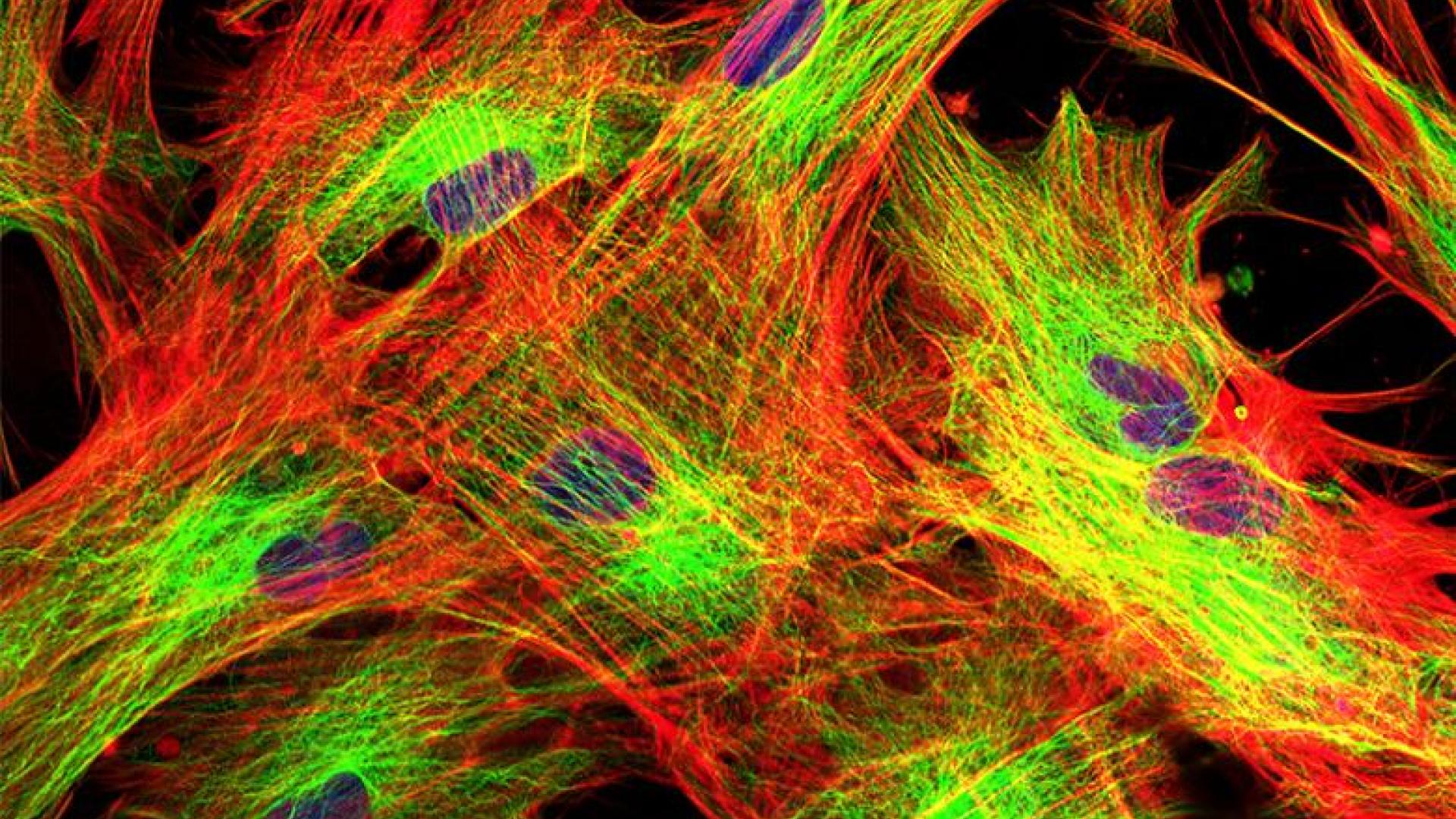
In clinical trials, stem cell therapy for glaucoma shows promise for rebuilding the eye’s drainage system and protecting the optic nerve.
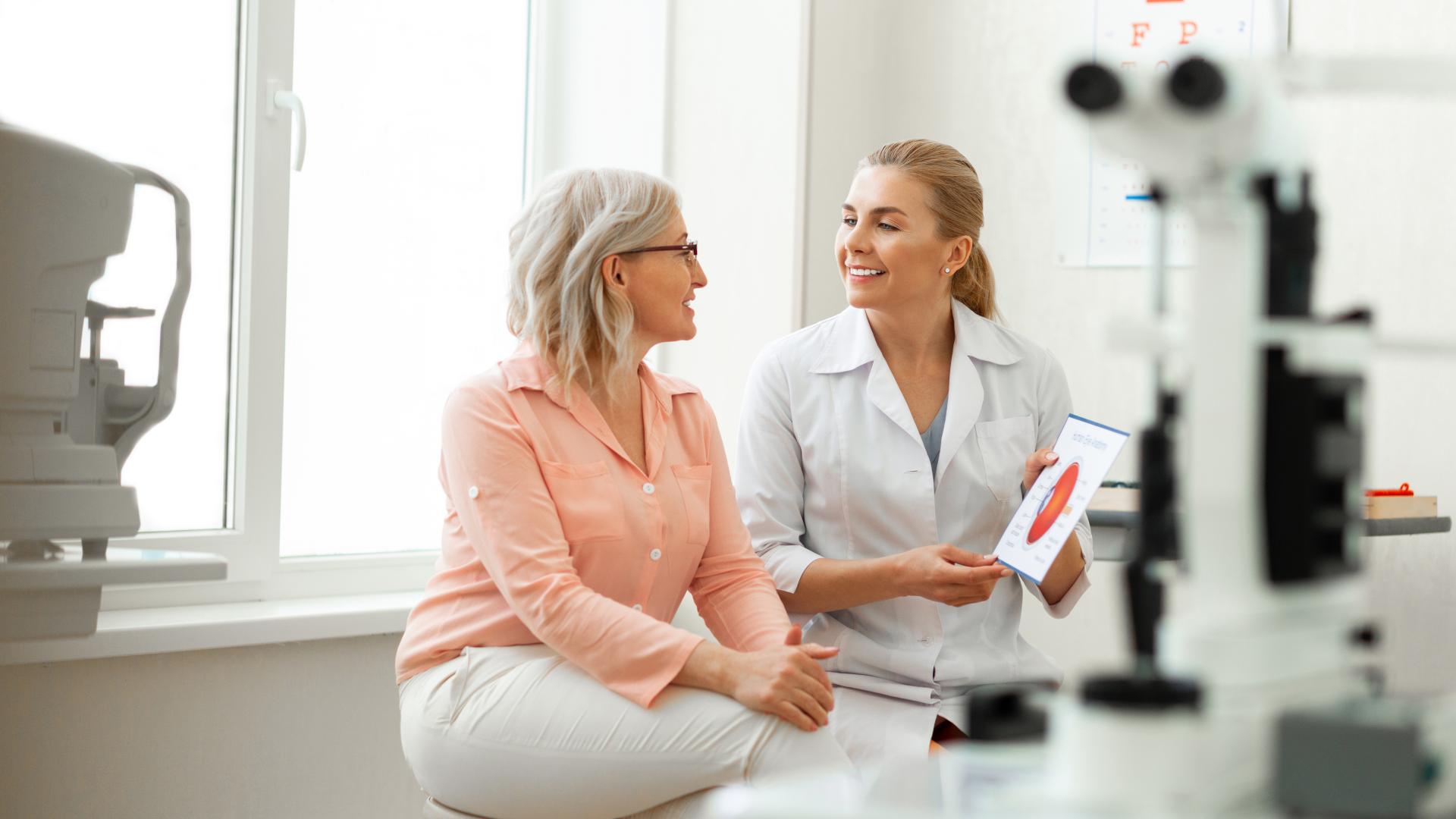
In this chat, Dr. Poonam Misra addresses some of the most common questions listeners have shared over the past year—from treatment options and lifestyle considerations to the latest educational resources.
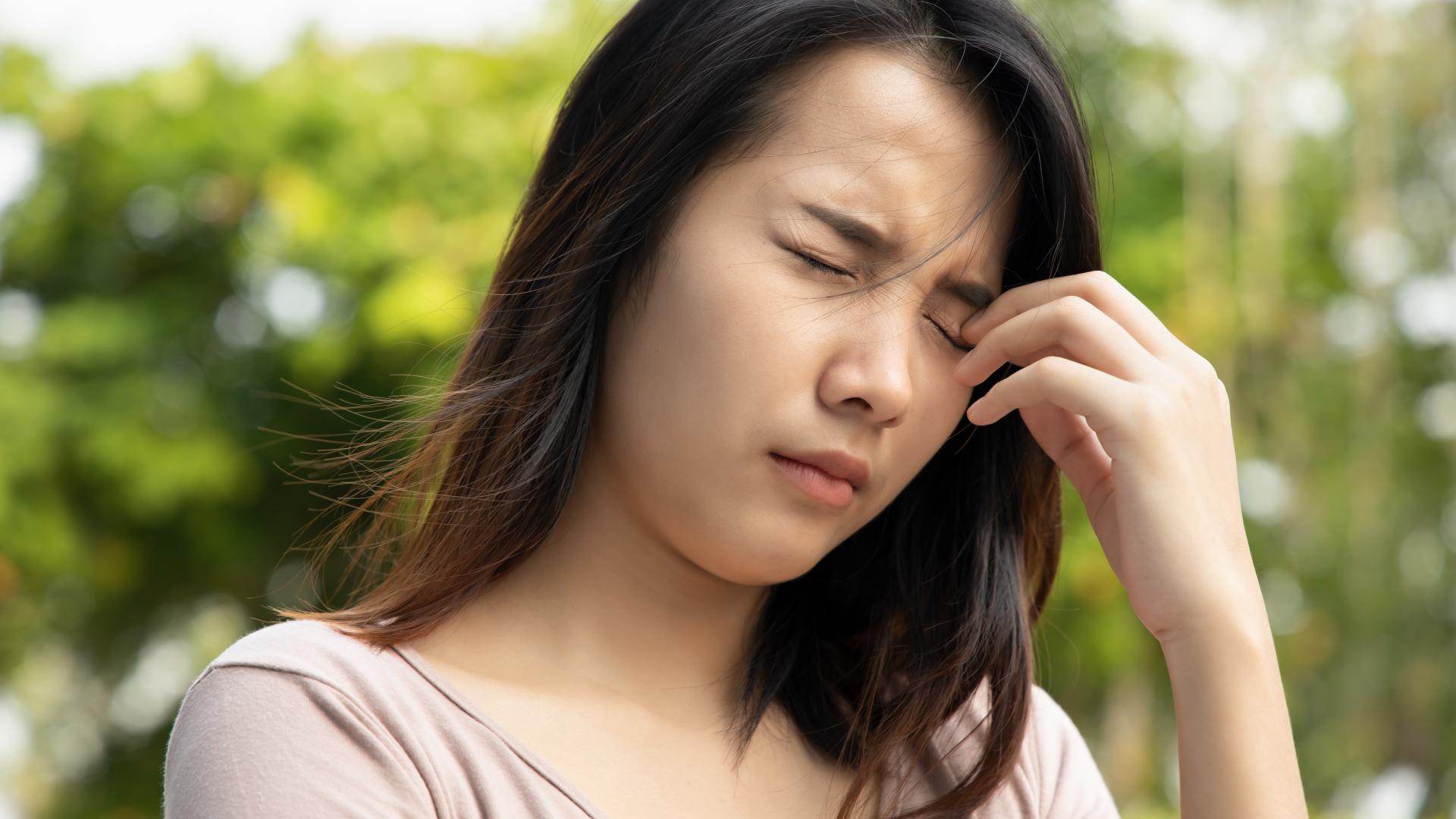
Dr. Astrid Werner explains what causes dry eye, how to recognize the symptoms, and effective treatment options—including preservative-free drops, artificial tears, and eyelid care routines.
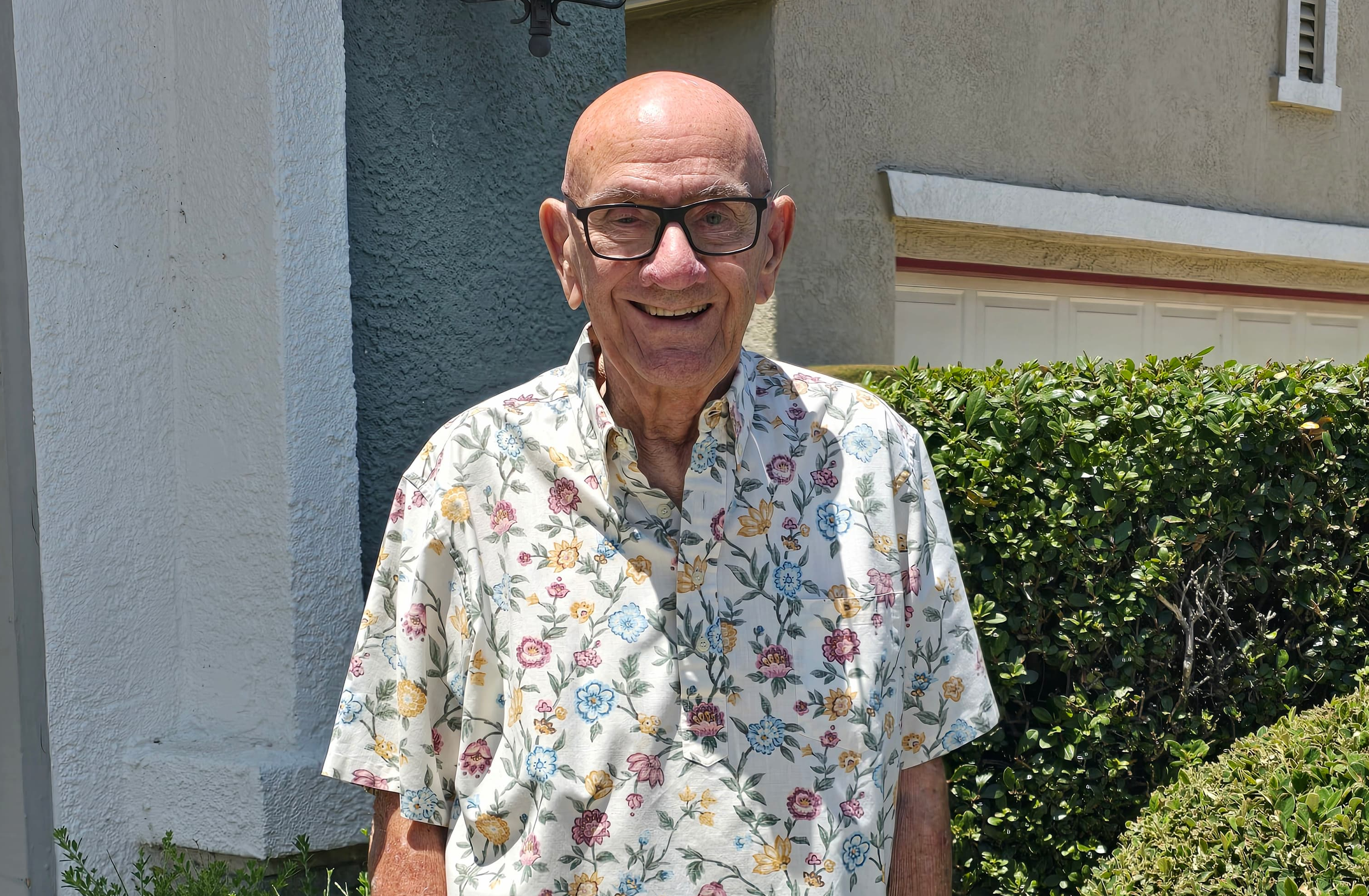
Meet Richard, a loyal donor to BrightFocus' National Glaucoma Research and Macular Degeneration Research programs.
Support Groundbreaking Glaucoma Research
Your support helps fund critical research that could prevent vision loss, provide valuable information to the public, and cure this sight-stealing disease.
Donate Today